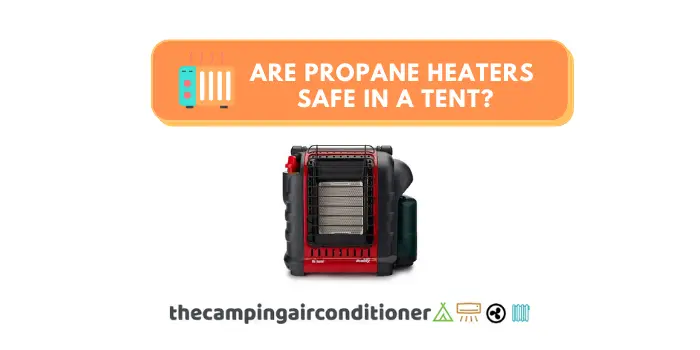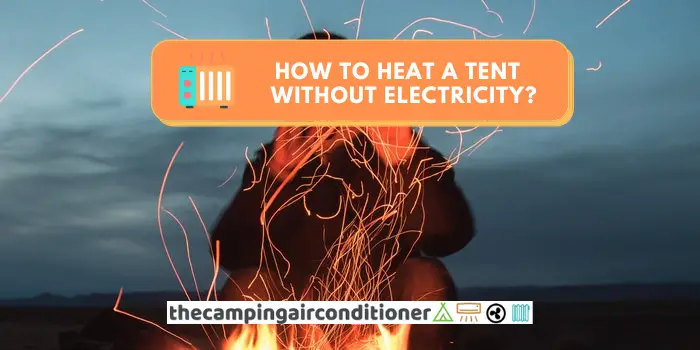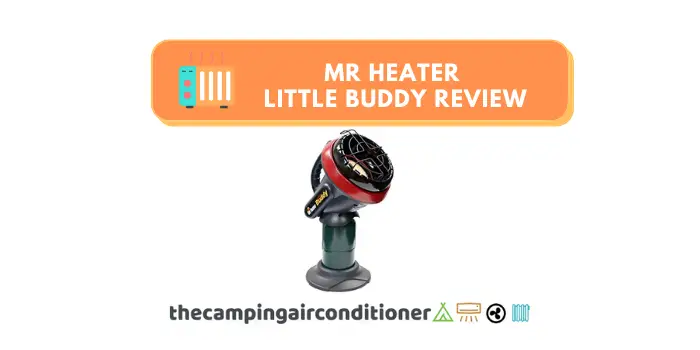Catalytic heaters are a great alternative to camping trips – they produce flameless heat and do not release carbon monoxide. But, is it safe to use a catalytic heater in a tent?
In summary, yes, they are very safe to be used inside your tent. However, you should pay attention to some safety measures, such as where to place your heater, ventilation, exposure to wet areas.
We detail all the safety tips to use a catalytic heater in a tent below – Let’s go through tem.
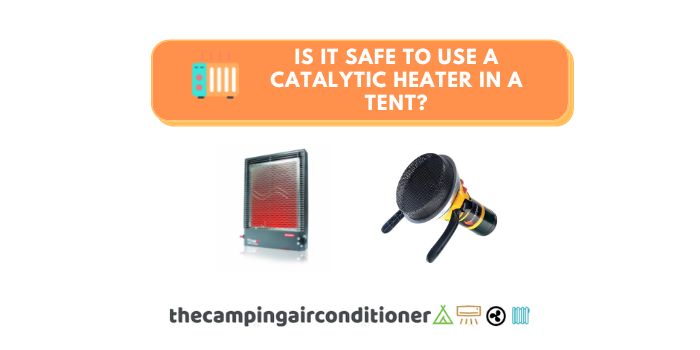
What is a catalytic heater?
By definition, catalysts are substances that significantly increase the speed of a chemical reaction. Catalytic heaters use specific chemical reactions that produce heat while breaking down molecules.
One of the main characteristics of a catalytic heater is that they are flameless, meaning that you won’t have any flame or fire associated with the heating process. In other words, fire hazards are almost inexistent (apart from overheating, which is still a risk).
Typically, catalysts are made from platinum or similar metals, like rhodium and palladium.
How does a catalytic heater work?
Even though it sounds complex, the process is actually quite simple.
The chemical reaction needs fuel (i.e. natural gas or propane), a catalyst (i.e. a platinum plate), and oxygen from the air to produce heat.
When these three components are placed together, they produce chemical reactions that flamelessly release large amounts of heat. It also does not create smoke or release fumes.
In a nutshell, the catalytic heating process follows these steps:
- Fuel (propane, natural gas) is released against the platinum plate.
- By turning on the heater, you electrically charge the platinum plate, which increases the pace of chemical reactions (catalyst)
- Chemical reactions occur and release heat!
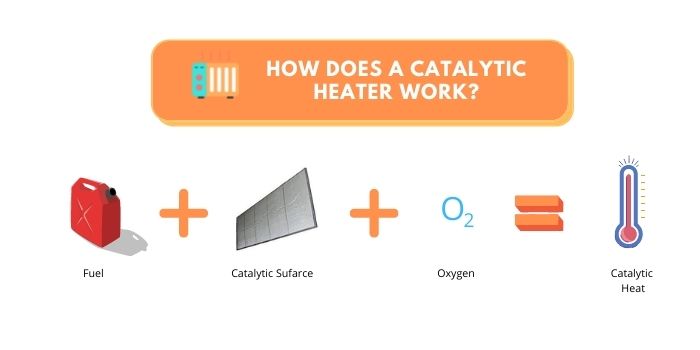
Is it safe to use a catalytic heater in a tent, then?
Yes, it is. It is probably one of the safest tent heating options alongside electric heaters. The advantages of catalytic heaters are many, such as:
- They do not produce monoxide carbon in the heating process (if properly installed and run)
- They do not use electricity to run
- They are flameless and do not release fumes
- They are very efficient
However, there are still some safety measures that you should put in place when using them inside your tent – let’s go through them below.
How to safely use a catalytic heater in a tent?
As with other camping heating options, catalytic heaters also require special attention to be used indoors. Some of the essential safety tips are:
- Place the heater far from tent walls (at least 50cm) so that there are no risks of tent fabric overheating and melting (overheating can potentially start a fire!)
- Ensure that your device is certified under ANSI Z21.103-2017, which regulates the use of unvented portable gas camp heaters indoors and outdoors.
- Similarly, ensure that your preferred device comes with auto-shutoff mechanisms to prevent tip-over, overheating risks and depletion of oxygen levels.
- Catalytic heaters are not supposed to produce carbon monoxide, but they still require ventilation since they use plenty of oxygen during chemical reactions. Albeit risks are low, you might face hypoxemia, which occurs when oxygen levels in your body are too low, leading to headache, shortness of breath, and confusion.
- When not using the heater, cover it and put it in a location without dust exposure. If dust builds up on the platinum plate, it will decrease the heating efficiency and increase the risks of carbon monoxide production.
- Even though the catalytic heater does not produce flames, we advise removing any flammable gear (such as plastic, inflatable mattress, etc.) inside your tent to avoid overheating risks.
- DO NOT sleep with your heater running and never leave it unattended while operating
Are catalytic heaters more efficient?
Catalytic heaters are highly efficient, with efficiency levels close to 100% and leave other tent heating options far behind (i.e. propane heater efficiency ranges from 70 to 90%).
One of the most significant advantages is that the heat only goes where the device is directed to.
What are the advantages and disadvantages of a catalytic heater?
We summarised the advantages and disadvantages of catalytic heaters below.
Pros
- Do not release Carbon Monoxide
- No need of electricity
- Very efficient combustion
- Flameless
- Works in extreme cold weather.
- Focused heating output
Cons
- Release moisture and increase tent condensation
- Might require more maintenance (can produce CO, if dust builds up)
- Pricey
- Not too many alternatives on the market
How many BTU do I need for a tent heater?
Your tent heater’s size (BTU) will depend on how big your tent is, reuqired temperature increase, and how many people will be using your tent. We wrote a detailed article on this topic, but the table below summarises your needs.
We suggest checking your tent dimensions and undertaking the calculations accordingly.
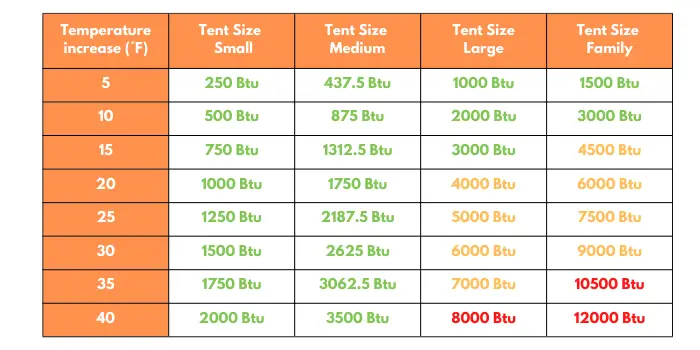
Catalytic heaters for tent - our recommendations
Based on extensive research and a review of products available in the market, we recommend the following catalytic heaters for your tent.
- Best option for small tents – Martin Portable Gas Catalytic Heater (3,000 Btu)
- Best option for medium to large tents – Camco Olympian Catalytic Safety Heater (4,200 to 8,000 BTU)
NOTE: Camco Olympian Catalytic Safety Heater (4,200 to 8,000 BTU) runs from LP Gas and a propane adaptor is required.
FAQ
Is Mr Buddy a catalytic heater?
No, it isn’t. Mr Heater Buddy is a propane radiant heater, with different heating mechanisms, when compared to catalytic heaters.
Do Catalytic Heaters produce moisture?
Yes. As part of the chemical reactions, carbon dioxide and water vapour are released into the air, which can increase tent condensation.
Will a heater stop condensation in a tent?
We wrote a detailed article on this topic – read it here.
Overall, only electric heaters will not release water molecules in the air, with all other gas options (propane, butane, kerosene, etc.) increasing humidity levels and negatively impacting condensation risks.
What heaters are safe for tents?
You can use a wide variety of heaters in a tent if you follow the manufacturer’s instructions and pay attention to specific safety measures.
You can read a detailed article with all pros and cons of each heating option in the article below.
Suggested Articles:
Conclusion
Catalytic heaters are an excellent option for your tent – they are safe, easy to operate, do not release CO, and do not require electricity to run.
However, they also come with some drawbacks – they tend to be pricey, require more maintenance, and you will not find many portable alternatives.



